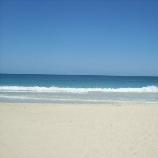-
Posts
5,665 -
Joined
-
Last visited
-
Days Won
209
Content Type
Profiles
Forums
Events
Everything posted by Aussie Ora
-
Sent from my SM-P600 using Tapatalk
-
Dee put up the fantastic plastic the other day with our first present. Don't mind the background I leave things everywhere lol Sent from my SM-P600 using Tapatalk
-
TelTru is a premier manufacturer of replacement thermometers; various of us have several (trading sensitivity for range). They state a low temperature operating limit of -50F for bimetal thermometers with silicone fill. My speculation is that their other bimetal thermometers have no such lower limit. The display quite naturally goes off scale low well before this point. Whether this causes loss of calibration is both an empirical question and a question for each manufacturer. My thermometers often see 25 F over winter nights, and on low & slow cooks the comparison with my BBQGuru is at least a sanity check (the different locations take a very long time to converge to the same temperature, even if all instrumentation has perfect accuracy). So, dunno. I've been able to ignore this issue and my food tastes good. As I said, ultimately an empirical question. Who has witnessed loss of calibration after freezing nights? For the regulation issue, the operating temperature range would be a good question for Dennis to take up with his supplier. Don't get me wrong; I deeply respect asking this question. What's the poster child for asking this question? Apollo 13 returning home alive after a severe explosion in space. The ultimate cause of the explosion was bare wire inside an oxygen tank, which sparked the contents during a routine in-flight stir. Earlier on the ground, NASA needed to boil off the contents of that tank, missing a voltage design change that accidentally fused a heating element always-on. They asked some guy to sit on a folding chair and say something if a thermometer read over a certain limit. The thermometer quickly reached and got stuck at this limit; it wasn't designed to read off scale high. The guy didn't say anything, and the tank problems went unnoticed. Did he fall asleep lol Sent from my SM-P600 using Tapatalk
-
I love this thread. You people make some awesome bread in such detail Sent from my SM-P600 using Tapatalk
-
That looks fantastic Sent from my SM-P600 using Tapatalk
-

Well, this was certainly strange(but a nice surprise)
Aussie Ora replied to billg71's topic in Jokes, Ribbin' & Misc Banter!
Score looks really good Sent from my SM-P600 using Tapatalk -
Cheers churchi I got it to 168 in the thigh just to make sure lol Sent from my SM-P600 using Tapatalk
-
Great cooks everything looks real tasty Sent from my SM-P600 using Tapatalk
-
In my limited experience which is limited to what I have now lol pecan. Pear. Apple and cherry. Pear gives a nice subtle touch a bit milder than apple but noticeable. Pecan sits with me really well I love it goes with anything according to my taste buds anyway lol. Sent from my SM-P600 using Tapatalk
-
That bread looks tasty Sent from my SM-P600 using Tapatalk
-
Thought I would do a spatchy have not done one in ages sort of become a rotisserie nut lolready to goI mixed up some of thiswith some dominator rub and a sash of paprikaput some under the skin then smeared the topI then gave both sides some dominator rubgot Ora up to 400 dee made up a potato bakeand ready to goon goes the bakethen the extender rack and the chook whilst that was chugging along I made up a ginger beer glaze chopped up the gingeradded the brown sugar and ginger beerand brought it to the boil to reduce check out the bark on the chook awesome ready to tent the bake turned out niceafter the restand plated with the glaze bake and some salad the Oakridge dominator rub really shined on the chook and the ginger beer glaze really topped it off Sent from my SM-P600 using Tapatalk
-
Great looking sholdar. The ribs look awesome and that little girl looks like she is enjoying her share nicleydone Sent from my SM-P600 using Tapatalk
-
Nice cooks welcome looking forward to seeing more Sent from my SM-P600 using Tapatalk
-
Share away mate Sent from my SM-P600 using Tapatalk
-
Delicious Sent from my SM-P600 using Tapatalk
-
I'm thinking of getting some wagu for Chrissy maybe not tri tip. I know what you mean on price being into bbq is like being on ice lol Sent from my SM-P600 using Tapatalk
-
Cool cheers Dennis it's confirmed I had tri tip yey it did taste good. And was cheap Sent from my SM-P600 using Tapatalk
-
LOL Sent from my SM-P600 using Tapatalk
-
Mocha Sent from my SM-P600 using Tapatalk
-
Whoo hoo and got dinner ready for me it's not on th KK but tasted great Sent from my SM-P600 using Tapatalk
-
I see rosemary and alot of pepper lol Sent from my SM-P600 using Tapatalk
-
Same here lol Sent from my SM-P600 using Tapatalk
-
Medium to small chunks are my preffered lump. I don't want or need half a tree. In saying that I have a reciprocating saw that I have used to cut up chunks on larger pieces works great. If you have a band saw even better just watch your fingers lol Sent from my SM-P600 using Tapatalk
-
Mine sits on a shelve lol my drip pan is still wrapped Sent from my SM-P600 using Tapatalk
-
Great idea Sent from my SM-P600 using Tapatalk


